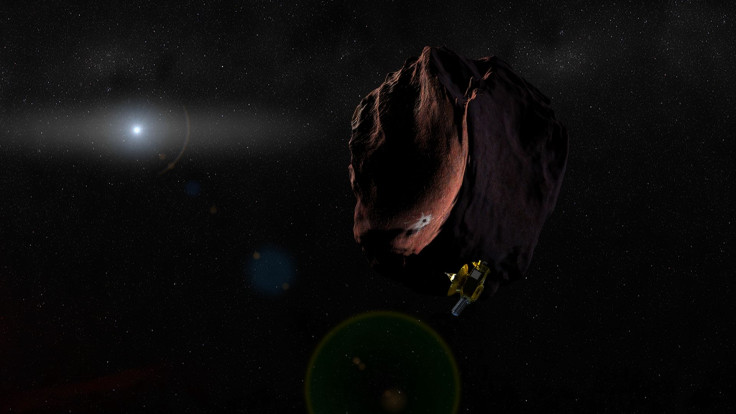New Horizons Eyes Its New Target: A Tiny Kuiper Belt Object A Billion Miles From Pluto

NASA’s New Horizons spacecraft will rendezvous with the distant Kuiper Belt object 2014 MU69 on Jan. 1, 2019 — three-and-a-half years after its historic flyby of Pluto. On Tuesday, NASA revealed the surface properties of this far-flung, tiny object located roughly a billion miles beyond the former planet.
Observations conducted using the Hubble Space Telescope indicate that this MU69, which has a diameter of approximately 20 to 30 miles, is as red — if not redder — than the splotches on Pluto. On the dwarf planet, the reddish color is likely caused by tholins, which are formed when cosmic rays and solar ultraviolet light interact with methane in Pluto’s atmosphere and on its surface.
Scientists believe the same mechanism may have given rise to MU69’s red color.
“The reddish color tells us the type of Kuiper Belt object 2014 MU69 is,” Amanda Zangari, a New Horizons post-doctoral researcher from Southwest Research Institute in Boulder, Colorado, said in a statement. “The data confirms that on New Year’s Day 2019, New Horizons will be looking at one of the ancient building blocks of the planets.”
On Tuesday, NASA also unveiled fresh discoveries made by researchers poring over the data collected by New Horizons during its Pluto flyby. One interesting thing that pops out are photos that suggest the presence of clouds on Pluto — a finding that, if confirmed, would suggest that the dwarf planet’s weather is more complex than previously imagined.
The photos taken by New Horizons' cameras show that the low-lying cloud candidates all lie near the terminator — the line dividing day from night — suggesting that the colder conditions present in these areas may be key to cloud formation on Pluto.

“We’re excited about the exploration ahead for New Horizons, and also about what we are still discovering from Pluto flyby data,” Alan Stern, principal investigator from Southwest Research Institute, said in the statement. “Now, with our spacecraft transmitting the last of its data from last summer’s flight through the Pluto system, we know that the next great exploration of Pluto will require another mission to be sent there.”
© Copyright IBTimes 2024. All rights reserved.












